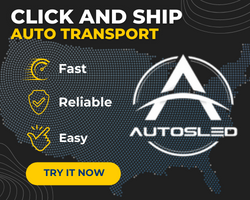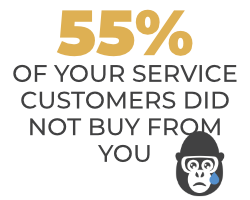IoT or the internet of things, is defined by Wikipedia as, “the network of physical objects or things embedded with electronics, software, sensors, and network connectivity…creating opportunities for more direct integration between the physical world and computer-based systems.”
IoT is a hot topic in retail, promising to transform how brick and mortar stores market and sell products to an increasingly smartphone-based shopper. As customers are using mobile to supplement the shopping experience, IoT is becoming the bridge between the mobile device and the retail object.
Beacons
Bluetooth Low Energy (BLE) has been at the forefront of retailing technology for its ability to provide micro-targeting smartphone experiences for the mobile shopper. More commonly known as “beacons,” these devices can be placed throughout a retail environment and trigger automatic actions on a nearby smartphone that shoppers can engage with.
Over 400 million beacons are estimated to be deployed in the next 4 years.
iBeacons, Eddystone
The most popular format, iBeacons, was pioneered by Apple and is compatible with modern iPhones and iPads. Thus far they have been exclusive to the Apple eco-system. iBeacons are designed to function as the micro-targeting component of a mobile app experience. iBeacons permit the app to display relevant content based on the product or service the shopper is physically in front of. Google introduced an alternate beacon technology, Eddystone, the summer of 2015. Eddystone seeks to broadcast a URL to a smartphone – aiming to bring beacon use outside the app ecosystem.
![]()
Beacons in Retail
Big retailers are taking action on the beacon trend. Macy’s, Target, Starwood Hotels, and Major League Baseball have all made major investments in retail IoT implementing beacons in retail environments across the country. ABI Research states that 1 million beacons exist in retail environments today. Over 400 million are estimated to be deployed in the next 4 years.
You may have experienced beacons while at your local Apple Store. Apple places beacons nearby product aggregates, providing shoppers with additional information. Shoppers near an Apple product on display are able to touch and feel the product, leading to next steps questions on specifications, rebates, or extended warrantee information. Through beacon technology, relevant information tied to that product appears automatically on the lock screen of the shopper’s iPhone. When the shopper physically moves to another Apple product in store, the app experience changes to focus on the product the shopper is standing in front of.
Beacons in Automotive Retail
Through beacon tech in each vehicle, a smartphone shopper can walk a dealer showroom and be offered a unique app experience tied to the vehicle nearby. As the shopper moves to a new vehicle, the app changes, showing manufacturer incentives and/or current inventory focused on the vehicle they are physically engaged with.
According to the recently released 2015 Google / TNS Auto Shopper study, “half of all car shoppers with mobile devices use their smartphones while at the dealership.” This represents a change in how customers are engaging a dealer while on the lot or in the showroom.

The smartphone has presented a shift in the way the customer progresses through the in-store shopping experience. For today’s mobile customer, the smartphone is one of the first tools used when stepping on the lot or showroom.
Because IoT devices, such as beacons, permit the connection of the smartphone with physical inventory, a unique opportunity is created for the smartphone shopper.
With beacons, retailers are creating an initial engagement point, a first-stage shopping assistant. Retailers are offering relevant information using the channel the shopper prefers. Additionally, beacons can reduce the effect of cross-shopping while in-store. Retailers are offering an alternate shopping experience on the device used to “showroom.” Finally, in the initial stage, many customers trust their mobile device more than a human sales person. This allows dealers to engage with shoppers who would otherwise avoid interaction with salespeople.
Beacons may be part of the game changer IoT promises in retail. The goal: deliver a better in-store shopping experience that places an emphasis on relevant content and messaging when the shopper needs it.
What ideas do you have for beacons in an automotive environment?
How would you use beacons in the sales process? How could they be used in service?








